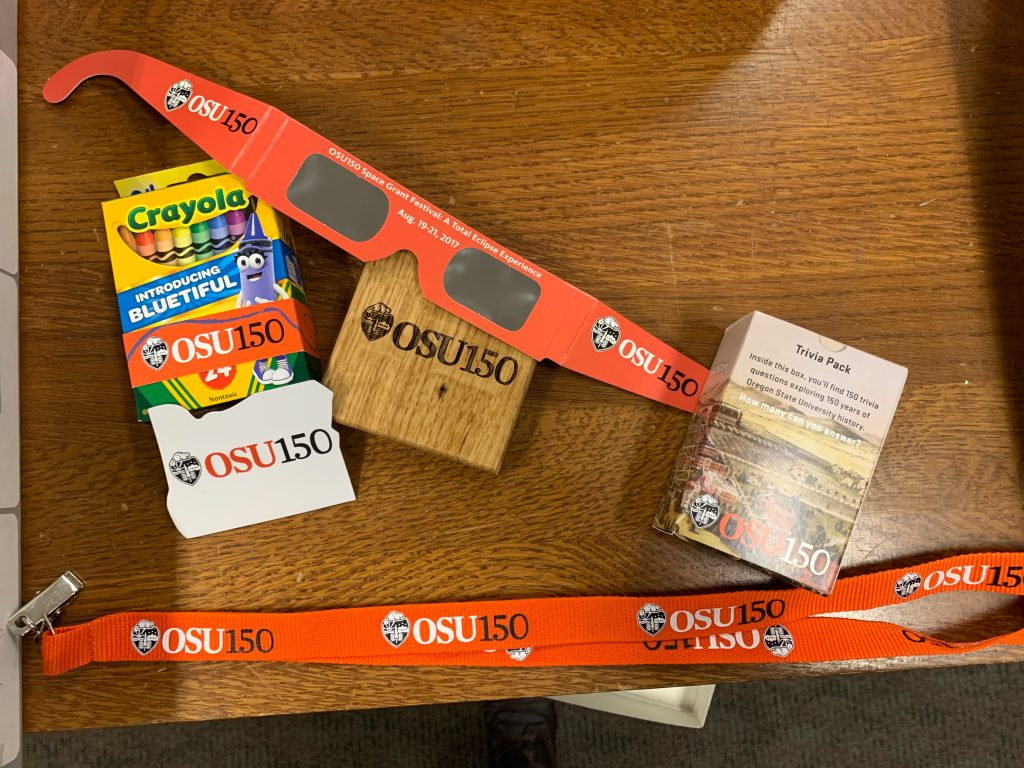The SCARC vault contains many of the rarest, most fragile, and most valuable items held in our collections. Babylonian cuneiform tablets, dating back to 2500 BCE, detail trade transactions involving sheep and goats. Charles Darwin’s expedition and experiences while aboard the The Beagle are detailed in a first-edition of The Voyage of the Beagle, published in 1836. The vault also contains historical manuscripts – including letters from famous scientists, a 13th century Bible on vellum, and Linus Pauling’s Nobel Prizes. There are many vault treasures – most of which are accessible to visiting patrons by request, and many of which are regularly used in class visits or SCARC events. One of the more unique items housed in the vault is the Scroll of Esther.
Tucked into an ill-suited document case, wrapped in tissue paper, lies the Scroll of Esther, which was probably made in the 18th century. The scroll consists of a single wooden roller, handle, and the rolled pieces of parchment, onto which the Hebrew book has been transcribed in handwriting, as per the Jewish tradition. While delicate, the scroll is in generally good condition – each part remains intact, the ink is still dark and visible, and the scroll can be read somewhat easily, with gentle handling. The document case housing and tissue paper wrapping, however, was decidedly inappropriate, and I was tasked with creating a more suitable enclosure for the scroll.

When designing a custom enclosure for an object such as a scroll, it is important to note where the object is most fragile, and thus needs the most support. The handle and top of the wooden roller are most subject to damage due to their precarious attachment. In some areas, the handle has just started to crack, as wood expands and contracts with the changing of its environment. Therefore, protecting these portions of the scroll was of utmost importance, and I needed to find a way to create a structure that would prevent the handle from becoming loose and breaking off within the box itself, in the case of careless transport or further degradation of the wood.
Before I began, I found it necessary to do a little research on the subject of scroll enclosures. An article detailing the acquisition of a large Torah scroll by the Rubenstein Library at Duke University explains how enclosures were modified to add frames to hold and support the handles of the Torah scrolls. I used this as inspiration for an enclosure that would suit the needs of our much smaller Esther scroll, which only had one handle and roller, as opposed to two, as many Hebrew Bible books traditionally contain. The design was relatively straight-forward: a box, a lid, and a structural frame for the wooden parts. Through my rather chaotic construction plans, you can generally see the process of manipulating the flat e-flute.

After the necessary measurements were made, I began the construction of the box. Each section was cut from e-flute board, folded, and shaped to form the parts. Through trial and error, a structurally sound box was created, with the appropriate dimension to enclose and protect the scroll. A label was added, and the scroll was placed back into the vault, where it will remain until it is of academic or intellectual use.

This blog post was authored by Hannah Lawson, a student archivist and chemistry major at OSU.



